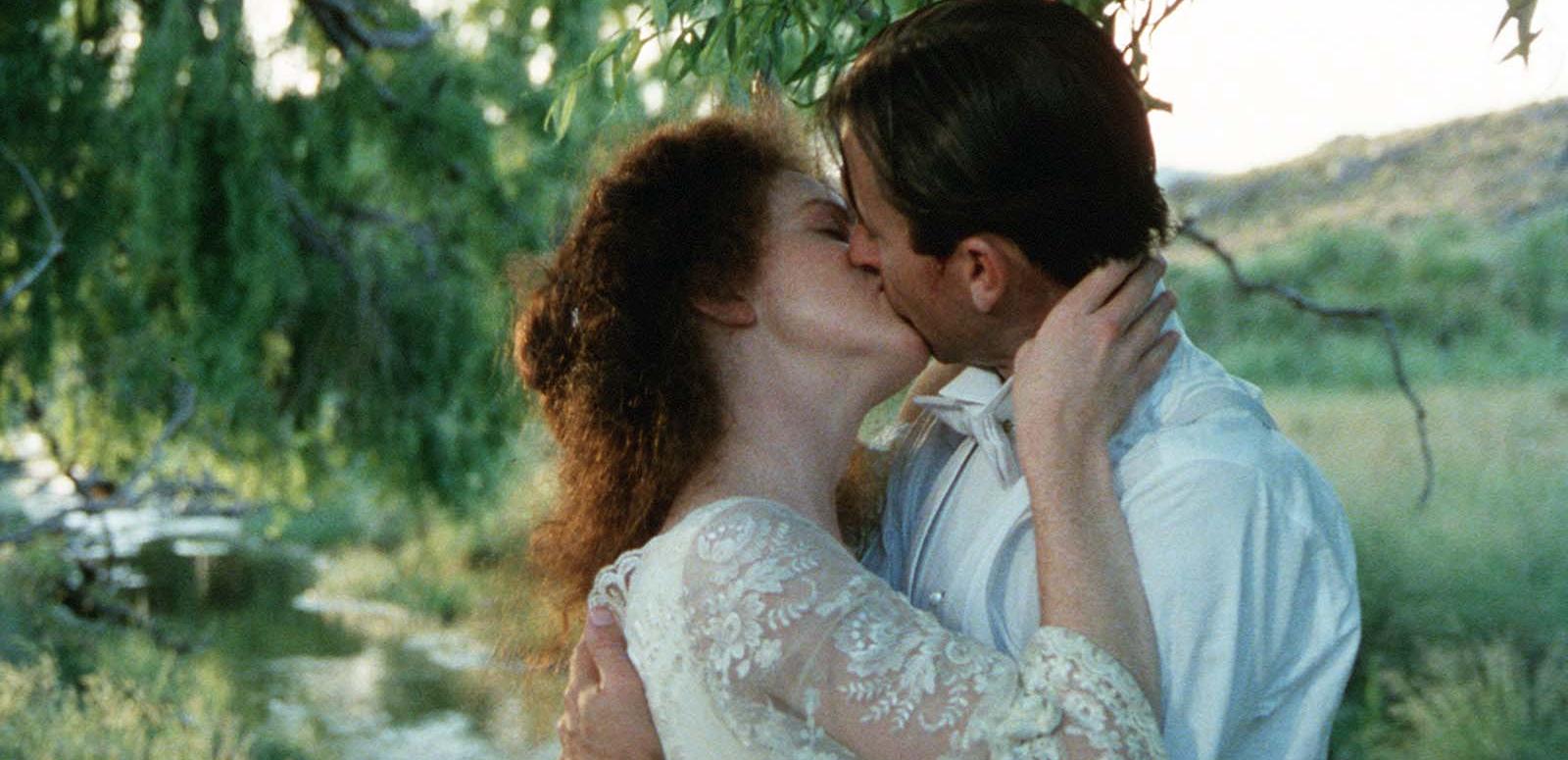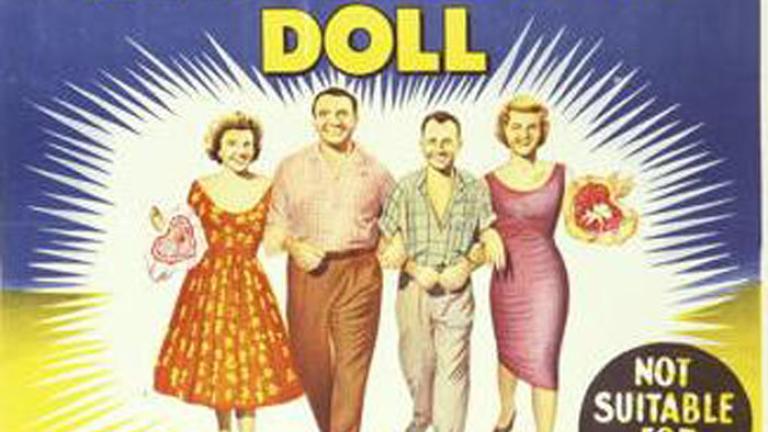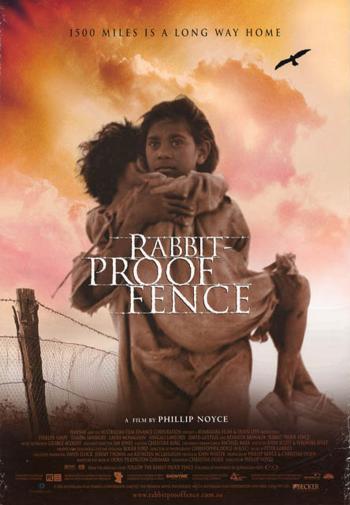

Great adaptations
20 August 2012 to 7 March 2013
Foyer Gallery

This exhibition of film posters highlights some of the many screen adaptations of Australian novels and plays held in the National Film and Sound Archive’s extensive collection. This exhibition ties in with the National Year of Reading 2012.
Novels, plays, musicals, biographies and even poems have been a primary source of stories adapted to film and later television screens since the earliest years of cinema. Inspired by audiences’ love of a screen adaptation, filmmakers and scriptwriters engage in what writer Hunter Cordaiy described as ‘this delicate transfer of words to image’.

The argument about which is better, the book or the film, continues to polarise and entertain bibliophiles and cinephiles. For producers, directors and screenwriters there are different questions — how to make a film faithful to the spirit of a text while creating something entirely new; how to transform a text imagined in the mind’s eye of one individual into a shared experience; and, finally, how to produce a screen adaptation within the constraints of time, budget and skill.
Adapting a text to film or television is the process of distilling hundreds of pages of words that might take many hours or days to read into a viewing experience of a few hours. The adaptation might require combining characters, dropping scenes, changing locations, and simplifying the structure and plotlines to make the text work better for a visual medium. The screenplay is then subject to budget constraints, the director’s changes to the script and actors’ interpretations of their roles. The importance of the adaptation to the film industry is recognised in the number of Academy Awards that go to film adaptations and the existence of a separate writing award for adapted screenplays.
This exhibition highlights some of the many film adaptations from novels and plays through posters from the NFSA’s collection (see gallery below).

Summer of the Seventeenth Doll (1959) Director: Leslie Norman, Screenplay: John Dighton from the play by Ray Lawler, Producer: Leslie Norman. Courtesy of Chapel Distribution

The Silence of Dean Maitland (1934) Director: Ken G Hall, Screenplay: Gayne Dexter and Edmund Barclay from the play based on a novel by Maxwell Gray, Producer: Ken G Hall. Courtesy of Cinesound Movietone

Don’s Party (1976) Director: Bruce Beresford, Screenplay: David Williamson based on his play, Producer: Phillip Adams. Courtesy of Phillip Adams

The Getting of Wisdom (1978) Director: Bruce Beresford, Screenplay: Eleanor Witcombe from the novel by Henry Handel Richardson, Producer: Phillip Adams. Courtesy of Phillip Adams

The Chant of Jimmie Blacksmith (1978) Director: Fred Schepisi, Screenplay: Fred Schepisi from the novel by Thomas Keneally, Producer: Fred Schepisi. Courtesy of Fred Schepisi

My Brilliant Career (1979) Director: Gillian Armstrong, Screenplay: Eleanor Witcombe from the book by Miles Franklin, Producer: Margaret Fink. Courtesy of Margaret Fink Films, Sydney

Rabbit-Proof Fence (2002) Director: Phillip Noyce, Screenwriter: Christine Olsen, Producers: John Winter, Christine Olsen, Phillip Noyce. Courtesy of Phillip Noyce, Christine Olsen, Miranda Culley and Palm Beach Pictures

Robbery Under Arms (1985) Directors: Donald Crombie, Ken Hannam, Screenwriters: Graeme Koetsveld, Tony Morphett, Michael Jenkins from the novel by Rolf Boldrewood, Producer: Jock Blair. Courtesy of the South Australian Film Corporation

The Year of Living Dangerously (1982) Director: Peter Weir, Screenplay: Peter Weir, Christopher Koch from the novel by CJ Koch, Producer: Jim McElroy. Courtesy of Chapel Distribution
Adaptations in Australia
As well as generating original scripts for the screen, Australian filmmakers and scriptwriters have sourced stories from historical and contemporary books as well as from stage plays and musicals. Some recent examples include: a popular television drama series produced from award-winning author Christos Tsiolkas’s novel The Slap (2011); feature films of Patrick White’s The Eye of the Storm (2011), John Marsden’s young adult fiction novel Tomorrow When the War Began (2010) and the musical stage plays Bran Nue Dae (2009) and The Sapphires (2012). Some interesting historical examples include feature versions by Raymond Longford (1919) and FW Thring (1932) of The Sentimental Bloke adapted from CJ Dennis’s verse novel The Songs of a Sentimental Bloke, and feature versions of On Our Selection by Raymond Longford (1920) and Ken G Hall (1932) from the Steele Rudd short stories featuring the bucolic characters Dad and Dave. Film adaptations of historical novels such as Henry Handel Richardson’s The Getting of Wisdom (1978) and Miles Franklin’s My Brilliant Career (1979) played a key part in the Australian film revival of the 1970s.

Popular source material can provide a ready-made film audience, as seen in the recent international screen productions of Suzanne Collins’s The Hunger Games (2012), JK Rowling’s Harry Potter series (2001—11), Peter Jackson’s The Lord of the Rings trilogy (2001–03) or the current crop of comic superhero-driven productions like The Avengers (2012) and The Dark Knight trilogy (2005–12). Audiences are often protective of the original text and prepared to be highly critical of adaptations that don’t capture the spirit of the original. While Australia has tended to produce fewer adaptations than other countries there have been a number of revered adaptations. Films of Wake in Fright (1971) and Picnic at Hanging Rock (1975) have arguably had more impact than the original novels.
Scriptwriting in Australia, in contrast to the process used in Hollywood productions, has often been undertaken by the director or producer or a scriptwriter inspired by a story or asked to do a story adaptation for a film production. Producer Patricia Lovell was a driving force in bringing Joan Lindsay’s novel Picnic at Hanging Rock to the screen in 1975, as was writer-producer Christine Olsen’s burning desire to adapt Doris Pilkington Garimara’s story Follow the Rabbit-Proof Fence. Occasionally a novelist or short-story writer, scriptwriter and director will work together, but the Australian film industry generally does not support Hollywood-style teams of writers working on a single project. The relationship and vision of the writer, screenwriter and filmmakers therefore becomes even more crucial in the successful realisation of an adaptation.

During and after the Second World War, Australian radio playwrights were responsible for significant local production and for a time were exporting their work. Television quickly became an avenue for adaptations, with mini-series and TV dramas based on Nancy Cato’s All the Rivers Run (1983), George Johnston’s My Brother Jack (in 1965 and 2001), Kylie Tennant’s Ride on Stranger (1979), and children’s books such as Pastures of the Blue Crane (1969) and Seven Little Australians (1973).
In recent decades film scripts have been adapted from stage plays such as those by the prolific David Williamson and Louis Nowra, with films of Stork (1971), The Removalists (1975), The Club (1980), Travelling North (1987) and Emerald City (1988) representing the former, and Cosi (1996) and Radiance (1998) the latter. In the next few decades we may see different kinds of adaptations as the way people tell their stories changes from book to web publishing. Julie & Julia (2009) was the first major feature film with a screenplay based on a blog as well as a more traditional memoir.
The NFSA would like to acknowledge the support of Currency Press, The Text Publishing Company, Penguin Group (Australia), HarperCollins Australia, Queensland University Press, M&A Film Corporation, Chapel Distribution, Random House Australia and Fred Schepisi in the development of this exhibition.
The National Film and Sound Archive of Australia acknowledges Australia’s Aboriginal and Torres Strait Islander peoples as the Traditional Custodians of the land on which we work and live and gives respect to their Elders both past and present.


